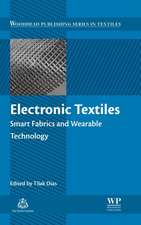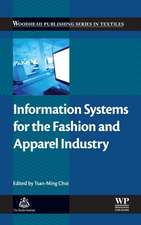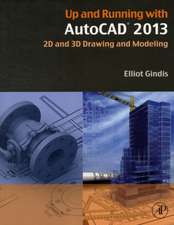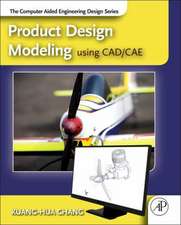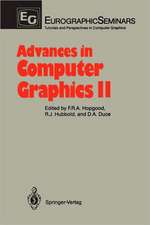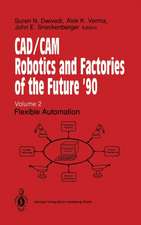Computer-Aided Geometric Design: A Totally Four-Dimensional Approach
Autor Fujio Yamaguchien Limba Engleză Hardback – 13 oct 2002
| Toate formatele și edițiile | Preț | Express |
|---|---|---|
| Paperback (1) | 1005.46 lei 6-8 săpt. | |
| Springer – 20 oct 2012 | 1005.46 lei 6-8 săpt. | |
| Hardback (1) | 1016.84 lei 6-8 săpt. | |
| Springer – 13 oct 2002 | 1016.84 lei 6-8 săpt. |
Preț: 1016.84 lei
Preț vechi: 1271.05 lei
-20% Nou
Puncte Express: 1525
Preț estimativ în valută:
194.57€ • 202.75$ • 161.11£
194.57€ • 202.75$ • 161.11£
Carte tipărită la comandă
Livrare economică 03-17 aprilie
Preluare comenzi: 021 569.72.76
Specificații
ISBN-13: 9784431703402
ISBN-10: 4431703403
Pagini: 672
Ilustrații: XXXIX, 630 p.
Dimensiuni: 155 x 235 x 46 mm
Greutate: 1.24 kg
Ediția:2002
Editura: Springer
Colecția Springer
Locul publicării:Tokyo, Japan
ISBN-10: 4431703403
Pagini: 672
Ilustrații: XXXIX, 630 p.
Dimensiuni: 155 x 235 x 46 mm
Greutate: 1.24 kg
Ediția:2002
Editura: Springer
Colecția Springer
Locul publicării:Tokyo, Japan
Public țintă
ResearchDescriere
Computer graphics, computer-aided design, and computer-aided manufacturing are tools that have become indispensable to a wide array of activities in contemporary society. Euclidean processing provides the basis for these computer-aided design systems although it contains elements that inevitably lead to an inaccurate, non-robust, and complex system. The primary cause of the deficiencies of Euclidean processing is the division operation, which becomes necessary if an n-space problem is to be processed in n-space. The difficulties that accompany the division operation may be avoided if processing is conducted entirely in (n+1)-space. The paradigm attained through the logical extension of this approach, totally four-dimensional processing, is the subject of this book. This book offers a new system of geometric processing techniques that attain accurate, robust, and compact computations, and allow the construction of a systematically structured CAD system.
Cuprins
I Problem Definitions.- 1 Problems of Euclidean Approach.- 2 Homogeneous Coordinates.- 3 Classical Projective Space.- 4 Two-Sided Space.- 5 Processing in Projective Spaces.- 6 Transformations.- II Presentation of a Solution-Four-dimensional Processing-Four-dimensional Processing-.- 7 A Solution.- 8 Geometric Definitions in General.- 9 Geometric Element Definitions.- 10 Homogeneous Curves.- 11 Homogeneous Surfaces.- 12 Basic Intersections.- 13 4 × 4 Determinant Methods.- 14 The Homogeneous Determinant Method.- 15 Geometric Newton-Raphson Method.- 16 Exact Arithmetic.- 17 Fundamentals of Topology.- 18 Data Structures.- 19 Euclidean and Affine.- 20 Set Operations.- 21 Polyhedron Subdivisions.- 22 Reconstruction of 3-D Points.- 23 Display Process.- 24 Classical or Two-Sided ?.- III Test Results.- 25 Various Tests.- IV Conclusions.- 26 Evaluations.- 27 Role of Division Operations.- 28 Various Interpretations.- Afterword.- A Fundamentals on Euclidean Processing.- A.1.- A.2.- A.3.- A.4.- B Various Geometries.- C Plane Determinant Method.- C.1.- C.2.- C.3.- C.4.- C.5.- C.5.1.- C.5.2.- D Analytical Geometry in Vector Space.- D.1.- D.1.1.- D.1.2.- D.1.3.- D.2.- D.2.1.- E Proofs for Chapter 16.- E.1.- E.2.
Caracteristici
Offers a new system of geometric processing techniques that attain accurate, robust, and compact computations, and allow the construction of a systematically structured CAD system

